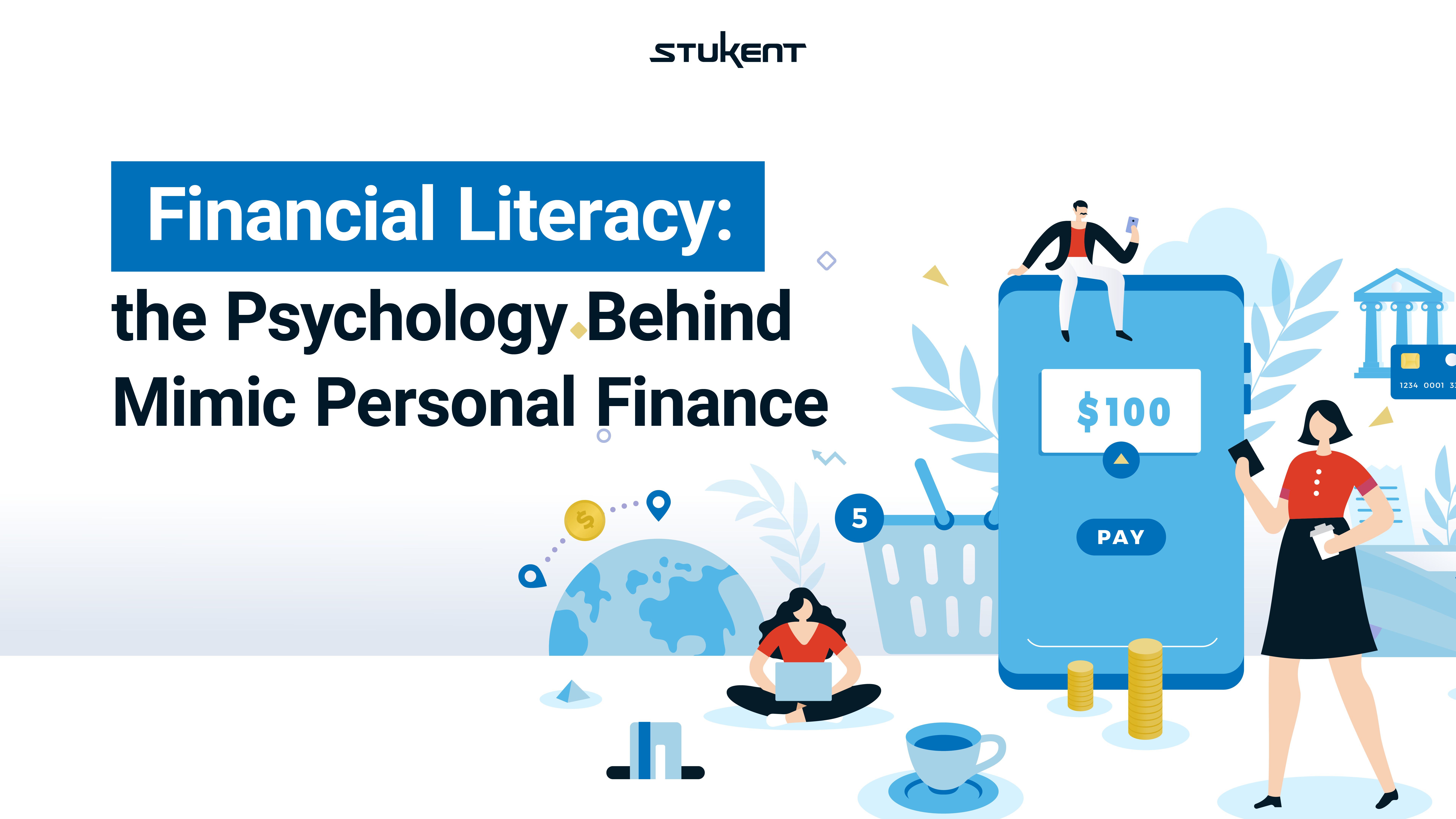With Mimic Personal Finance, students don’t have to learn to manage their money the hard way.
This groundbreaking simulation was born after high school teacher Brian Bean fell for a Ponzi scheme that drove him into debt. Fortunately for Bean — and students worldwide — his story doesn’t end there.
Bean returned to college to study banking and finance, determined to change the world. He earned a master’s degree in teaching methodology, then worked to create the Real-World Classroom Teaching Model and Mimic Personal Finance, hoping to help others avoid the financial disaster that he and his family endured.
Here’s what Bean told Stukent about the experience:

I didn’t understand how someone could go and get a bachelor’s degree in science and still be so ignorant of something that should have been practical knowledge to many people. So I started looking really, really closely at how we as an industry approached the topic of personal finance, and I felt like we were deficient and that there was room for improvement.
Brian Bean, Creator of Mimic Personal Finance
Bean didn’t create the first personal finance simulation, but unlike other products, Mimic Personal Finance doesn’t gamify its approach. This unique simulation imitates the financial decisions — and more importantly, the consequences of those decisions — that students will face as adults. It doesn’t just teach students basic personal finance concepts but empowers them to make sound decisions.
So, when Dr. Cynthia Nebel, a professor at Vanderbilt University, heard about Mimic Personal Finance, she was excited to explore the simulation with Bean. Dr. Nebel is an expert on the science of learning, and she was intrigued by the psychological underpinnings of Bean’s new simulation.
How Mimic Personal Finance Closes the Education Gap
Stukent partners with top educators and industry experts to build courseware and simulations that prepare students for the workforce. We strive to help educators help students help the world. To do that, we build resources that close the gap between what educators have and what they need.
Like Bean, many educators aren’t well-versed in personal finance. The Mimic Personal Finance simulation solves that problem by providing students with an engaging, profound, hands-on experience.
Here’s what a few teachers have said about Mimic Personal Finance:
Near Transfer
and Mimic Personal Finance
It’s one thing to learn about a topic, but quite another to practice what you’ve learned. Near transfer, or knowledge transfer between similar topics or concepts, turns study into action. It’s the principle behind Stukent’s Mimic simulations and one reason why our courseware is so effective. Practice builds capability as well as confidence.
Dr. Nebel had this to say about Mimic Personal Finance:

[Students are] doing the actual things they will need to do with the information later in life. That means they are more likely to use that information than someone who learns those things in the abstract. … Mimic Personal Finance allows them to see how things are applicable to multiple situations.
Dr. Cynthia Nebel, professor at Vanderbilt University
The near transfer principle is a core component of Mimic simulations. Students gain the confidence and skill necessary to make a financial decision automatically, without needing to debate over what to do next.
Delay Discounting and Mimic Personal Finance
The value we place on something tends to diminish over time. It’s the premise behind the famous Stanford marshmallow experiment on delayed reward discounting, or delayed gratification.
In Stanford’s study, children could choose to receive a marshmallow immediately, or they could wait a small amount of time (about 15 minutes) and get two. Follow-up studies found that the children who were able to control their impulses and wait for the double reward “became adults who were more likely to finish college and earn higher incomes, and were less likely to become overweight,” according to an APA interview with the study’s author, Dr. Walter Mischel.
Like the marshmallow test, Mimic Personal Finance shows students how delaying gratification can improve their futures. While participating in the simulation, students feel the weight of their decisions. They “buy” classroom perks with their Mimic Personal Finance wallet. For example, those who opt for an expensive car may not have the funds to “buy” a class seat in a desirable location. Bean says he was surprised at how often students would choose to “buy” an expensive vehicle in the simulation, despite the impending real-world financial consequences in the classroom.
Consequently, students learn to put their money toward future goals. “[Students] learn there is a legitimate opportunity cost to their financial decisions,” says Bean. “That’s what makes Mimic Personal Finance different from everything else — we made the money “real” to leverage opportunity cost.”
Mimic Personal Finance “is closer to a genuine experiential learning experience than [other courses],” Dr. Nebel adds, “but in reality, there are no opportunity costs involved in those other simulations.”
Social Mirror Theory
and Mimic Personal Finance
Social Mirror Theory states that humans need feedback from their peers to shape their self-image — we think of ourselves in the way we believe others think about us. Bean observed students would often go for flashy, highly priced options in the simulation … but later find their choices didn’t impress their classmates.
The student who overspends discovers that being broke isn’t appealing. If the student buys a new car but can’t pay their utility bill, they learn poverty isn’t workable and will not impress their friends and family — or, for that matter, keep a roof over their head.
Educational Equity and Mimic Personal Finance
“With Mimic Personal Finance, everybody comes in on equal footing,” says Dr. Nebel. Students begin at the same economic status, regardless of their real-life financial situation or education.
Students who apply the personal finance principles taught in Mimic Personal Finance may finish the course with more assets. Students who don’t use the simulation’s concepts, strategies, and best practices may face financial hardship. Results depend entirely on the spending decisions the student makes.
A quote attributed to Pythagoras says, “Choices are the hinges of destiny.” Students who realize that their choices determine the future are better equipped to face challenges with a positive attitude. Mimic Personal Finance empowers students to take hold of their futures and make wise, informed decisions with their money.
Motivation and Mimic Personal Finance
Motivation is the key to success with Mimic Personal Finance. Students who may not be driven by grades discover that their efforts affect their credit score in the simulation … and their credit score impacts their ability to get what they want in class. Mimic Personal Finance lets students put their money to work, and the experience changes the way they view their finances.
“If students perform poorly in the simulation, it affects both their grade and their classroom privileges,” Bean says. “Likewise, how they perform in class also affects their performance in the simulation.” Mimic Personal Finance rewards students for engaging with the material, allowing them to practice making critical life decisions in the safety of the classroom.
With Mimic Personal Finance, students learn from their own mistakes and the mistakes of others. Unexpected life events also impact students’ simulated finances, forcing them to adapt and develop their own approaches to financial matters.
No matter what economic situations a student faces in life, the principles taught in Mimic Personal Finance can improve their financial aptitude, increase their confidence, and help them make better long-term decisions with their money. Mimic Personal Finance is the only simulation that lets students practice decision-based learning, make real-world financial choices, and experience in-class consequences.
To learn more about Stukent’s revolutionary courseware and simulations, or to get FREE instructor access to our products, visit our website.
If you’re already using Mimic Personal Finance in your classroom, congratulations! Your students will reap the benefits for years to come. If you’ve not yet registered, schedule a demo online today.






